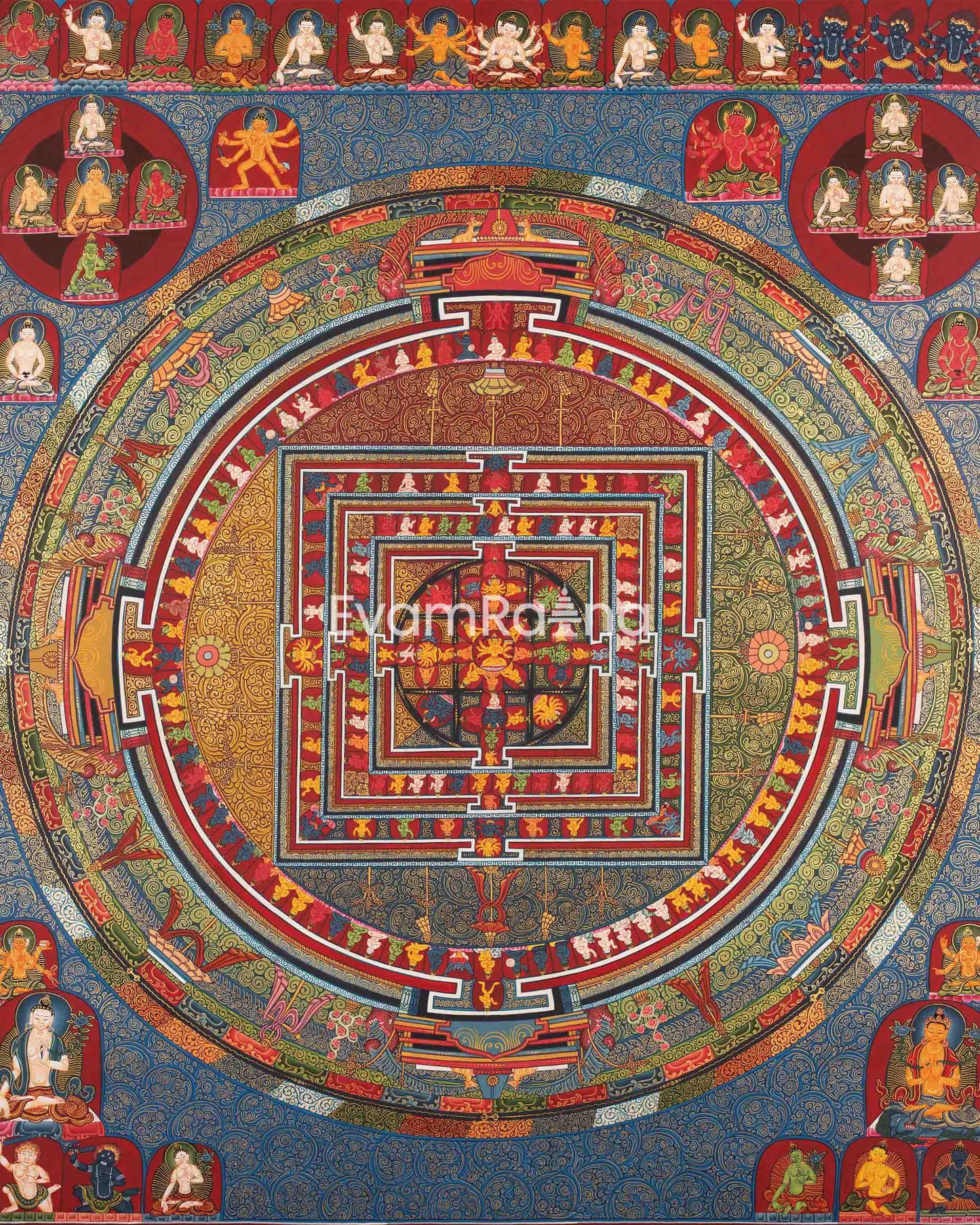Dharma Dhatu Mandala | Buddhist wall Decor | Thangka Print
Dharma Dhatu Mandala | Buddhist wall Decor | Thangka Print
SKU:1186EBMandalaP
Couldn't load pickup availability
Dharma Dhatu Mandala
Introduction To The Print :
Dharma Dhatu Mandala also known as Dharmadhatu Vagishvara Manjushri with 219 deities (Tibetan: jam pal cho ying sung gi wang chug lha nyi gya dang chu gui kyil kor).
The deity Manjushri is located in the heart of the intricate circular mandala (center and circumference). He is seated in the cross-legged vajra position and has eight hands in addition to four faces. The four Buddhas of the four directions, along with their attendants and consorts, constitute the first circle of encircling deities. Each has the same appearance as the central figure. The 219 other gods surrounding the prominent figures expand outward in declining order and total 219 in number.
How does Thangka benefit us?
It goes without saying that every detail of a painting has a symbolic meaning. Regardless of your religious affiliation, a thangka can help you on your path to enlightenment, whether you practice Buddhism or have other religious convictions. Thangkas are paintings that depict deities with various iconographic elements and symbolism that encourage meditation on the teachings of the god they depict. Any thangka is intended to aid in the removal of the film of ignorance, which is a significant barrier to the road to enlightenment. The Thangka is revered as a holy item. They promote positivity, spread Buddhism's teachings, bring about peace, harmony, and oneness, and dispel any negative energy that may be there.
Share




















